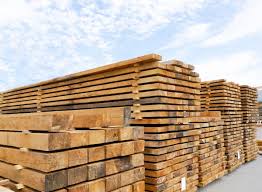
Massive Timber Market Fire Sparks
Massive Timber Market Fire Sparks Outrage and Safety Concerns
Timber Market – Fires in commercial hubs often expose the fragile balance between economic activity, public safety, and governance. The recent fire at the timber market has once again highlighted the vulnerabilities of urban marketplaces where safety standards often fall behind rapid economic growth. This article provides a comprehensive analysis of the fire incident, its impact, and the broader implications for urban safety and disaster management.

The Incident: How the Fire Started
According to initial reports, the fire broke out in the early hours of the morning, quickly spreading through stacks of dry timber. Eyewitnesses describe how flames leapt from shop to shop, fueled by wood, sawdust, and chemicals used in carpentry. Within minutes, large sections of the market were engulfed.
Emergency services were alerted immediately, and dozens of fire tenders rushed to the scene. However, the density of the market, combined with narrow lanes and flammable materials, made firefighting operations extremely difficult. The blaze continued for several hours before it was brought under control.
Casualties and Human Impact
Thankfully, early indications suggest that casualties were limited, largely because the fire began before peak market hours. However, some shopkeepers and laborers who stayed overnight sustained injuries while trying to save goods.
The psychological toll is immense. Families dependent on timber businesses have been left devastated, with many facing sudden unemployment and financial instability. For daily wage laborers, the loss of livelihood is particularly severe.
Economic Losses
The timber market is a vital economic hub, supplying wood to builders, carpenters, and furniture makers. The fire destroyed warehouses, shops, and machinery worth crores of rupees.
Key areas of loss include:
- Stocked Timber – Large quantities of wood reduced to ash.
- Infrastructure Damage – Sheds, offices, and machinery completely destroyed.
- Supply Chain Disruption – Builders and contractors now face shortages and rising prices.
Local traders’ associations estimate that it will take months, if not years, to fully recover. Insurance claims are already being filed, but not all shopkeepers had coverage, leaving many at risk of financial ruin.
Why Timber Markets Are Fire Prone
Timber markets across India share common features that make them highly vulnerable to fire:
- Highly Flammable Materials – Wood, sawdust, varnishes, and paints act as natural accelerants.
- Congested Layouts – Narrow lanes hinder fire tenders and emergency evacuation.
- Inadequate Fire Safety – Many markets lack fire extinguishers, hydrants, and sprinklers.
- Overloaded Electrical Systems – Faulty wiring and unauthorized connections are frequent culprits.
Experts have repeatedly warned of these risks, but enforcement has been inconsistent.
Government and Administrative Response
Authorities have announced an immediate inquiry into the causes of the fire and the adequacy of safety measures. The municipal corporation and fire department are under pressure to explain why preventive action was not taken despite prior warnings about the timber market’s vulnerability.
Political leaders visited the site, offering assurances of relief packages and compensation. However, critics argue that promises after disasters are routine, while long-term reforms remain elusive.
Lessons from Past Incidents
The timber market fire is not an isolated event. Similar blazes have been reported in wholesale markets, godowns, and industrial hubs in recent years. These recurring tragedies underline systemic problems:
- Lack of Regular Fire Audits
- Weak Enforcement of Safety Norms
- Absence of Emergency Evacuation Drills
- Poor Coordination Among Agencies
Until these gaps are addressed, experts fear that such disasters will continue to recur.
Voices from the Ground
Local traders and residents have expressed anger and despair. Many allege that repeated complaints about electrical hazards and unsafe storage practices were ignored by authorities.
Ramesh Gupta, a shop owner, said:
“We begged the administration to install fire hydrants and conduct inspections. Now we are left with nothing.”
Policy Implications
The fire has reopened debates about urban planning and market regulation. Should hazardous materials like timber be stored in densely populated city centers? Should authorities relocate such markets to safer zones with modern infrastructure?
Urban safety experts recommend creating dedicated industrial clusters outside city cores, equipped with fire safety systems, wide roads, and compliance monitoring.
Environmental Impact
While human and economic losses dominate headlines, the fire also caused environmental damage. Burning wood and chemicals released large amounts of smoke and particulate matter, worsening air quality in nearby neighborhoods. For a city already battling pollution, such incidents are an added burden.
Recommendations for the Future
To prevent similar tragedies, stakeholders propose:
- Mandatory Fire Safety Upgrades – Hydrants, extinguishers, and sprinklers in all markets.
- Relocation of Hazardous Markets – Moving fire-prone businesses to safer zones.
- Insurance Awareness Programs – Ensuring traders have financial protection.
- Regular Fire Drills – Training workers in emergency response.
- Strict Electrical Audits – Preventing short circuits and overloads.
Conclusion
The timber market fire is a stark reminder of the urgent need for fire safety reforms in India’s commercial hubs. While authorities will investigate and promise compensation, the real test lies in long-term structural changes.
For traders, workers, and residents, the hope is that this tragedy will finally push authorities to prioritize safety over convenience. Until then, India’s markets remain vulnerable to the devastating force of fire.




